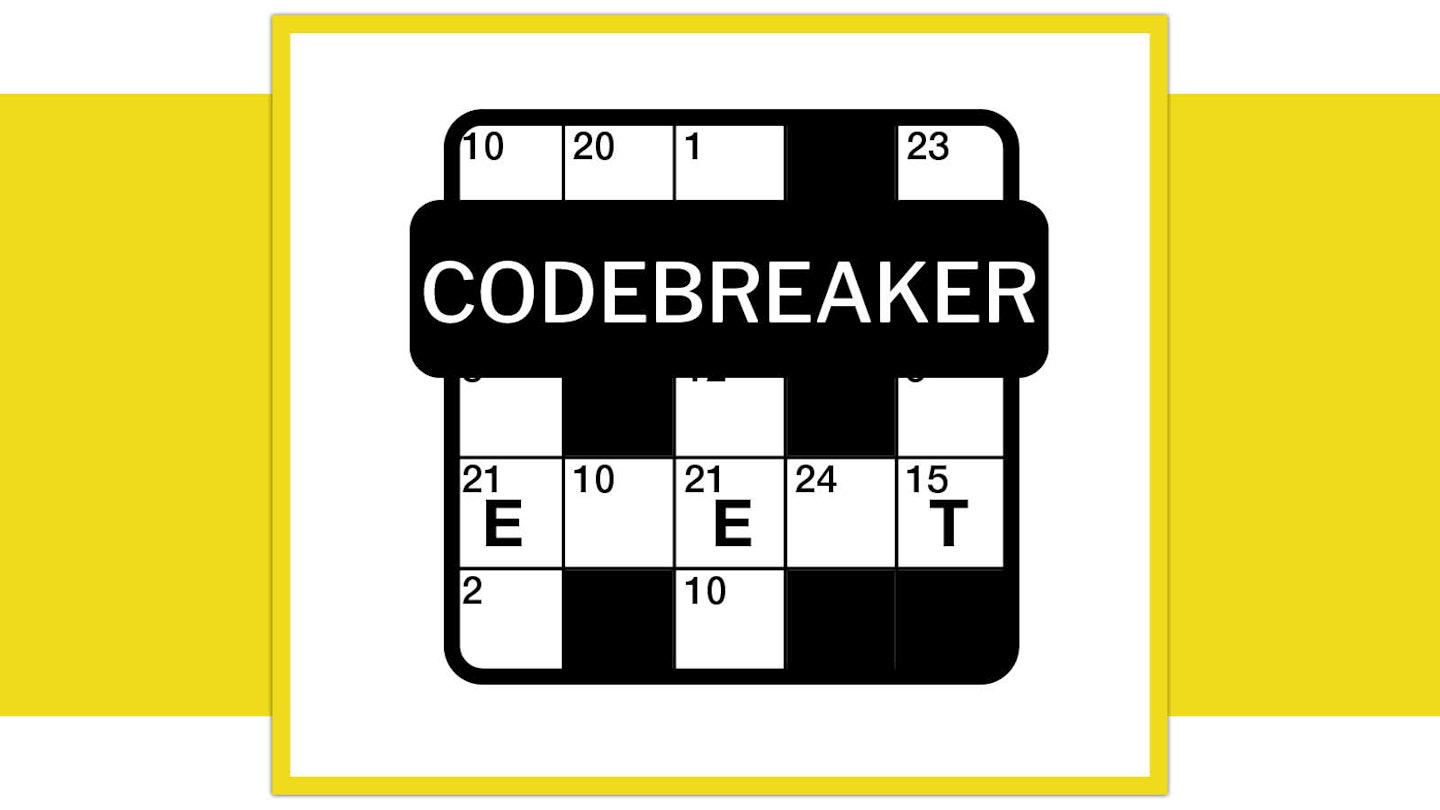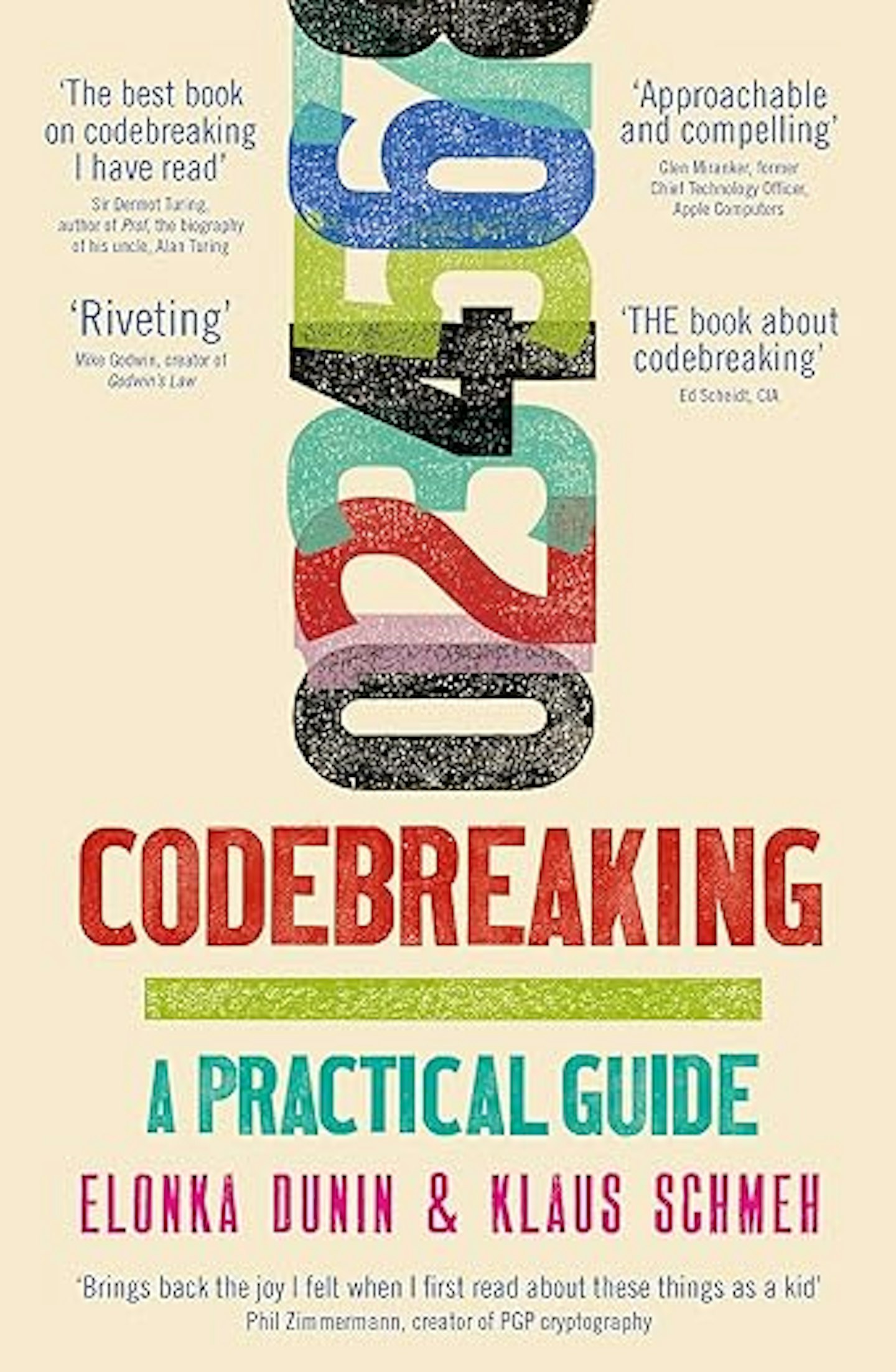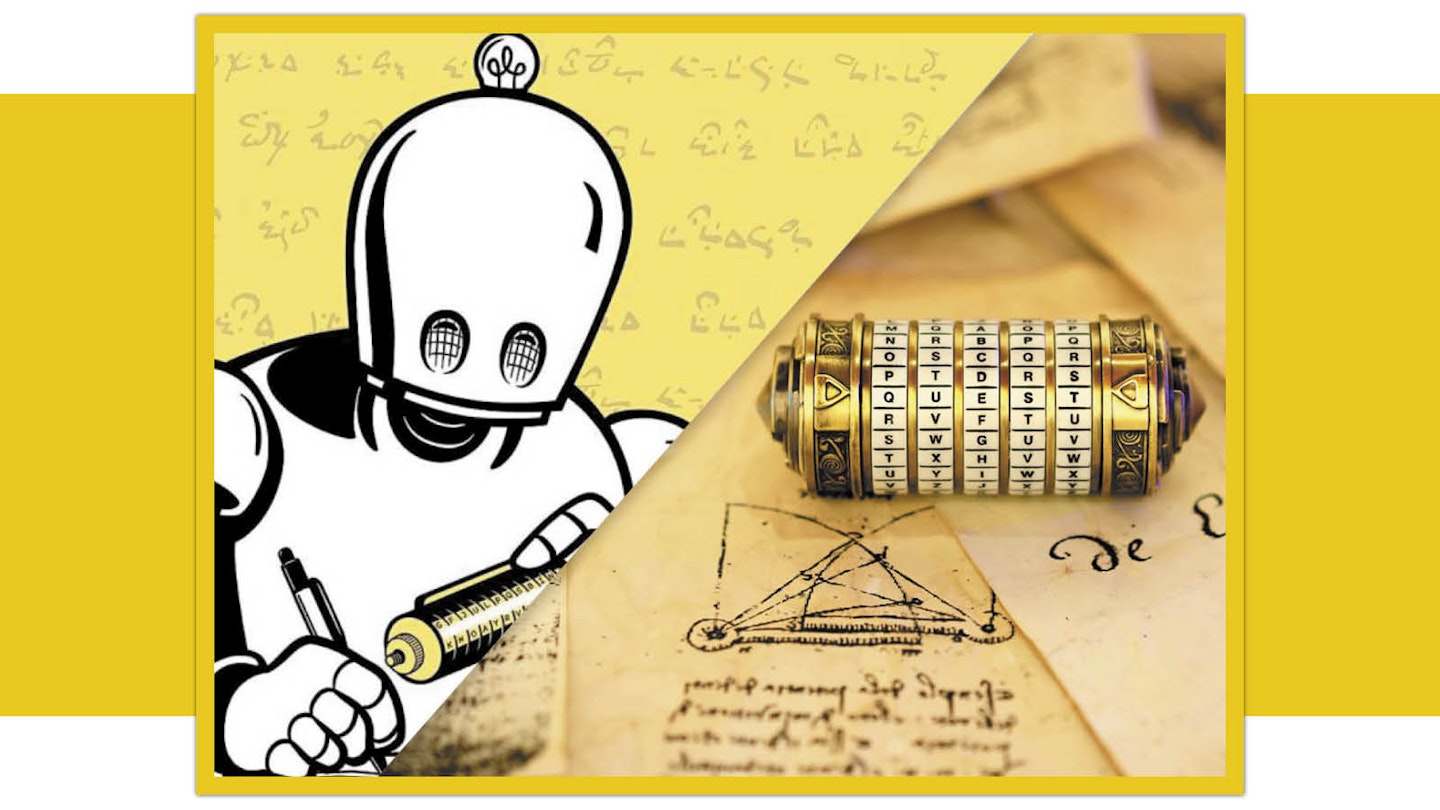Ever tried to break a code or cipher? Or encrypt a message yourself? Perhaps you’re intrigued by Beatrix Potter’s encrypted diary or the Zodiac Killer’s cryptograms. Or maybe you’ve unearthed a secret message. If so, this book has your name written all over it (in code, of course).
Codebreaking: A Practical Guide is a goldmine for the crypto-curious. Authored by world-leading authorities in codebreaking, Elonka Dunin and Klaus Schmeh, this book shines with their enthusiasm and expertise, and has impressive scope. The authors not only hold up a mirror to the past by solving authentic encrypted messages, but also bring things bang up to date by covering modern software, computational methods and websites for cryptanalysis.
Masterclass in clear presentation
Hats off both to the authors and to the editorial team for presenting this complex content so clearly. Each chapter follows the same structure, introducing a different encryption method and explaining how the cipher works (using a real example), as well as how to detect and break it. Some of the cipher names may ring a bell even if you haven’t read about codebreaking before, for example Caesar, pigpen and Playfair. Techniques for breaking a cipher, such as frequency analysis of single and double letters, guessing frequent words and words with unusual letter patterns, make intuitive sense too.
So far, so fascinating. Then, even better! Under the modest heading of ‘Success stories’, the authors describe authentic examples of the decryption of cryptograms and codes, some of which changed the course of history. Honestly, ‘Mind-blowing stories’ wouldn’t be overstating it. The historical significance of cracking the Zimmermann telegram in the First World War and the JN-25 code in the Second World War — not to mention Enigma — is the stuff of crypto-legend.

Equally mind-boggling is the variety of authentic documents, illustrated by photos of original postcards, letters, diaries and telegrams. These real examples of cryptograms vividly bring this subject to life, so it’s not a cerebral exercise, but the story of how these sad, funny, terrible, sweet messages had an impact on the lives of real people.
The sub-chapters ‘Success stories’, ‘Challenges’ and ‘Unsolved cryptograms’ are full of nuggets that will raise a smile — or an eyebrow. Check out these gems: what did Diana Dors and a twentieth-century psychic called Thouless have in common? Both left encrypted messages behind when they died. Dors’ message promised to reveal the whereabouts of her two million pound legacy, while Thouless intended to prove the existence of an afterlife with his, by communicating its key from the beyond. No spoilers from me on either outcome!

If, by now, you’re itching to solve some puzzles yourself, here’s some balm. The challenges and unsolved cryptograms encourage you to practise your new-found skills, with hints and answers on the authors’ Codebreaking Guide website. Warning: you may lose yourself completely to this pursuit!
Is this book for you?
Language lovers will adore the linguistic lore, maths whizzes will dig deep into the stats and software, history buffs will feast on the world-changing events, law enforcement folks will connect with the prison codes, and archive addicts will dig the authentic documents. As a puzzles fan, you’ll want to get stuck into the challenges — perhaps even decrypting an unsolved cryptogram?
My view
At over 500 pages, this book is a tome. I’d recommend viewing the sample on Amazon to see if you’ll enjoy this nitty-gritty guide on the mechanics of codebreaking. It’s not really possible to skip ahead or skim-read it. That said, I did find it accessible, as the explanations are so clear and well-illustrated.
I think it’s tremendous value for money. With dozens of cryptograms to tackle and recommended websites to explore, I happily lost myself for weeks in its charms.
Over to you
I guarantee this book will inspire you to try your hand at creating your own cryptograms. Here’s a puzzle I made using the encryption method in chapter 9. Scroll down past a TED talk from Codebreaking co-author Elonka Dunin to see the answer. Hint: it’s a transposition cipher.
DTAHEERBEEVSATHBIOGONKIOKNACEORDBE
FREE DAILY ONLINE CODEBREAKERS
CODEBREAKERS PUZZLE MAGAZINE SUBSCRIPTION
Answer to cryptogram: THE BEST BOOK ON CODEBREAKING I HAVE READ
This quote is Sir Dermot Turing’s endorsement on the book’s cover.
How to solve: Write the message in lines of two letters and read the letters down the second column (the red letters below) then back up the first column (the blue letters below).

Alternatively, in this example you can also read every second letter of the message from left to right (the red letters below) until you reach the end. Then read every second letter from right to left (the blue letters below) until you're back at the beginning.


HOW TO SOLVE A CODEBREAKER PUZZLE
by Elonka Dunin and Klaus Schmeh

